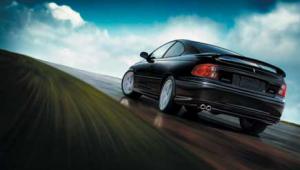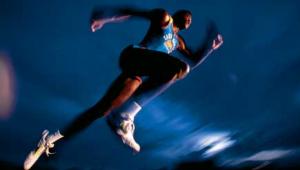Votre site est éclairante et incroyablement helpful.Most de nous sera certainement affirmer que tout ce que vous dites dans votre site est super. replique montres
Sarah Silver: Capturing The Art Of Motion Page 2
Silver points out that the famous Henri Cartier-Bresson talked about the "decisive moment," and says that the same holds true with dance. "My years of dance training taught me something about timing--and there is definitely a right and wrong time to take that picture. In fact, I always know when I'm `early' or `late.'"
When she shoots movement fashion, the "rules" are a little different. She thinks that it's "part intuition/gut/instinct" that drives the process, although she doesn't forget that it's the fashion that drives the shoot. "If the clothing sings, 9 times out of 10, your timing is on, as well."
 |
|
|
Gauging what the clothing can do is something she tests with each model on
a shoot. "I always ask the model off-set, `what does this outfit
say to you?' This is my way of asking the model to literally think of
the clothing as a living object, something to manipulate and understand in terms
of its fabric, form, and movement."
Lighting To Freeze Action
Silver strives to get sharpness in focus, texture, and "the freezing of
that special moment." For this reason, she says, strobe lighting is the
only option. A quick flash duration is imperative, "since it's the
flash burst that's controlling the freezing aspect of the shots. The faster
the flash duration, the sharper the movement."
She advises using a limited f-stop, as a pack at full power has a very slow
flash duration. "It's a constant battle of limits--depth of
field vs. the flash output. I use Broncolor Grafit A2 and A4 packs because they
allow me to control the flash duration. And for the large group shots I really
need a lot of juice. What this means is that for a lot of people jumping all
at once, I use a lot of packs and heads to make sure everybody is illuminated
properly."
 |
|
|
How Many Takes To Get The Shot?
She says that you never know if you'll get your shot on the first take
or "the 101st." Silver says that the secret is to always be ready,
because you'll never get the same result twice. "Sometimes if you
aren't completely lit for a shot, but the movement is perfect, you could
try for the next hour to get it back again. The result is a tired and angry
model and a lot of disappointment. You don't want to exhaust yourself
and your subject because the images will reflect the truth."
 |
|
|
| Silver's Toolbox
|
| · Hasselblad 503 CW · Sinar 54M Digital back · Broncolor Grafit A2 lights · Apple G5 Tower and G4 Titanium laptop · Lacie Electron 22 Blue IV monitor · ColorVision Spyder2Pro monitor calibration · Epson Stylus Pro 1280 printer · Moab Kokapelli Satin and Entrada Bright White 300 paper · Wacom tablet (for retouching) |
Backdrops
Silver says that her choice of backdrops depends on the concept of the assignment.
"Flat color fields are very traditional in movement photography because
they really help the subject to pop from the page. However, the really elaborate
backdrops (painted color textures or pictorial scenes) from companies such as
Broderson Backdrops make for a great motif that can also stylistically drive
the shoot."
Choreographers
"I have been fortunate to work with some of the most brilliant choreographers,"
remarks Silver. "The experience for me is really exhilarating because
we work together to create the movement/composition/form. I always stop and
have a reality check and think, `am I really choreographing side by side
with this person?'"
On other shoots, she acts as the choreographer, but says that this process still
involves group input with the model and the team.
"I thrive in a collaborative atmosphere. I find that when you get everybody
involved on set (and it's digital so we see the results immediately on-screen),
we all have a dynamic and exciting shooting experience. You can feel the raw
energy in the room when the right moment appears on the monitor and everybody
starts jumping up and down and literally starts screaming--lots of high-fives
all around."
Models Or Dancers?
Silver chooses models or dancers for a shoot depending on the client. "Fashion
magazines have a readership base that's used to seeing a certain type
of model. When you use dancers, they can't relate as well. However, there
are some magazines that urge me to use dancers because they know the results
will be extra dynamic. And don't forget that there are some professional
models who are also dancers. That's really the magic combination. All
the agencies in New York City know that I'm always on the lookout for
dancing models."
For Dance:
Silver says she looks for models or dancers "who can really move."
They don't need to have traditional dance backgrounds (although it helps).
"However, if they can follow my directions well and add their own element
of creativity, we can really have a great shoot. Also, a model with fantastic
energy is a must."
For Beauty:
She seeks models who are not classic beauties. "I prefer models with interesting
and unique characteristics. I find that a pretty girl with makeup on is usually
not nearly as captivating as a model with very interesting features who, when
photographed, will be transformed into something really special."
ISO & Shutter Speeds
"The shutter speed is always set to 1¼125 and the f-stop is usually
somewhere between f/8 and f/11.5. Of course, it's still that flash duration
problem. So f/11.5 is a rare gift. The flash duration for movement has to be
at least 1¼1000. However, more is always better."
More Online
To see more of Sarah Silver's work, please visit her website at: www.sarahsilver.com.
- Log in or register to post comments










































